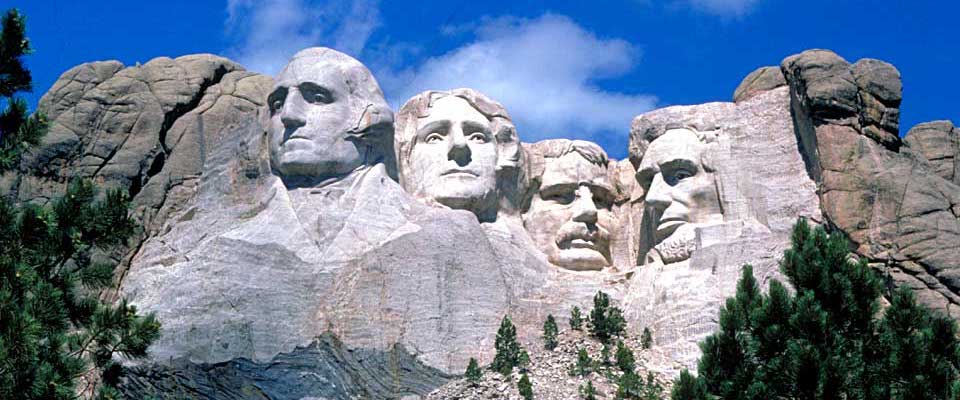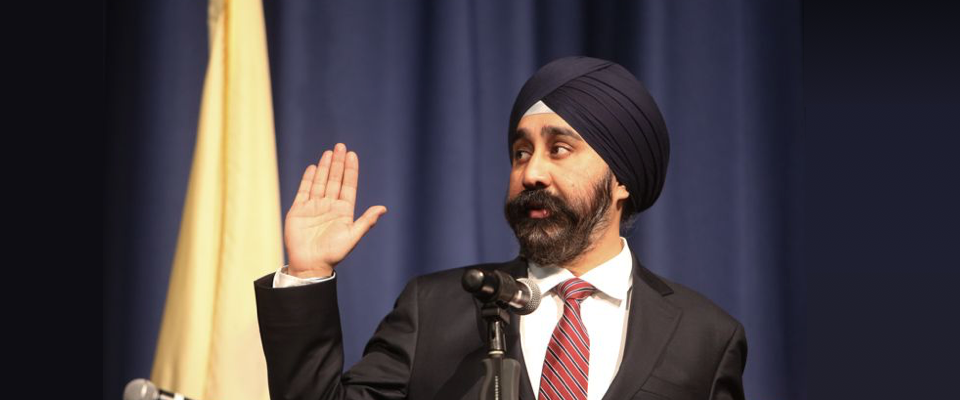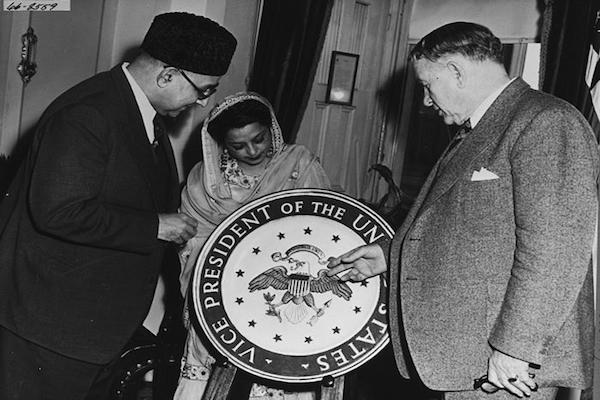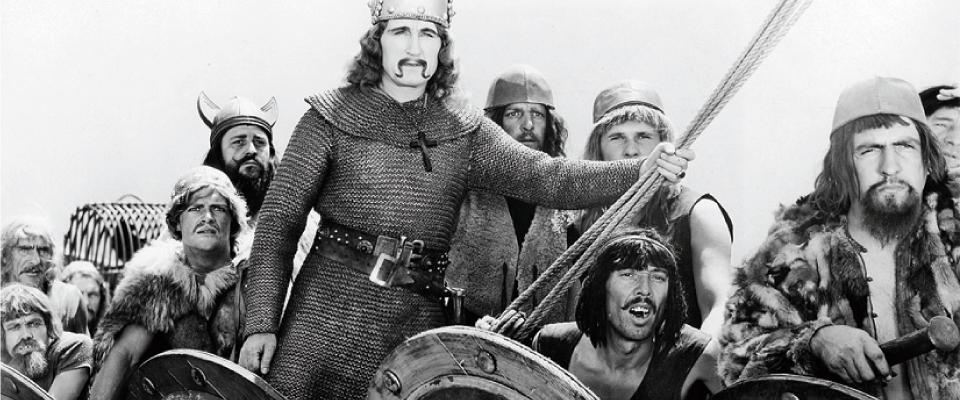Donald Trump’s critics say he’s the worst president ever; his fans say he’s one of the best. That’s par for the course: Barack Obama and George W. Bush got mixed reviews, too, depending on who was doing the reviewing. So what do historians say?
Nothing yet about Trump. Before his inauguration, C-SPAN conducted a survey of 91 historians, both liberal and conservative, and the results were recently released. Obama appears for the first time in the poll, making an impressive debut at No. 12, just ahead of James Monroe and just behind Woodrow Wilson. And he’s bound to appear even higher on the list next time because Wilson’s stock is falling fast. He’s down a whopping six places since the first C-SPAN survey in 2000, as a new generation of historians looks more critically upon his segregation of the armed forces and infringement of civil liberties during World War I (a criticism that Franklin D. Roosevelt, who also has a lot to answer for on the civil liberties front, has managed to dodge so far, holding firmly onto the No. 3 spot).
“Conservatives like Eisenhower benefit from the bigotry of low expectations.”
But the biggest surprise is the rapid rise of two Republicans who not so long ago were dismissed as amiable lightweights— Dwight D. Eisenhower, who is now in what one of the survey voters, Professor Gil Troy of McGill University, calls “Mount Rushmore territory” at No. 5, and Ronald Reagan, who just cracked the top ten at No. 9.
“The thing that knocked my socks off is that Eisenhower did so well,” says Troy. “Conservatives like Eisenhower benefit from the bigotry of low expectations. You expect them to be boobs, and when they turn out better they rise to the top.”
But another survey voter, Carl Anthony, author and historian at the National First Ladies’ Library, says those low expectations were part of Ike’s plan.
“Eisenhower was not some dunce of a grandfather, as people thought. He was the Supreme Commander of the invasion of Europe, after all. But that image helped his reputation politically because he seemed so unthreatening. When I interviewed Bill Clinton for the oral history biography I was writing about Jacqueline Onassis, he said that one of the most fascinating things she pointed out to him was that the Kennedy and Johnson Justice Department is still widely credited for pressing desegregation suits in the South, and then she added that nobody ever talks about the fact that the circuit court judges who were put in place to write those decisions were liberal Republicans appointed by Ike.
“It takes time for these things to be understood, especially when Eisenhower and his people weren’t pushing this as part of their overt agenda. They didn’t want to get the reputation as radical civil rights advocates.”

As for Reagan, Daniel Sargent, associate professor of history at UC Berkeley, says, “The C-SPAN poll is a good read on how serious historians have begun to reevaluate Reagan in light of new evidence. The idea that he was just a dumb movie star who was manipulated by his advisors is incompatible with evidence showing him to be an intelligent and thoughtful leader. That image was composed by a generation of historians who lived through the Reagan era and took a bleak view of it. Now a younger generation can look at it more dispassionately, and they see Reagan as the man who ended the Cold War without conflagration. In the Trump era his reputation is only going to rise. He and Obama present a sharp contrast to Trump. Even George W. Bush looks decent and competent.”
Professor Stephen Skowronek of Yale thinks presidents should be judged not by some undefined standard of greatness but by the one Barack Obama posited: their transformative effect. And by that standard Reagan, along with Jefferson, Jackson and FDR, looks pretty good.
“Not too many presidents have control of their own legacy, but these guys reset the terms and conditions in a way that their successors were forced to defer to. And not just their party, but the other one, too. Think about Clinton: ‘I’m not a conservative, but I’m not a liberal, either. I’m a third way.’ That’s the Reagan revolution right there.”
But most historians see Jackson’s reputation going the other way, despite his reconstruction of the political landscape. Old Hickory was in the “near great” category when the first poll of historians was conducted by the late Professor Arthur Schlesinger Sr. of Harvard in 1948, but he has dropped sharply ever since— from No. 6 in 1948 to 18 in the latest C-SPAN poll.
“I think that tells you something about historiographical fashions,” says Sargent. “Historians have come to take a less charitable view of a Jacksonian democracy that excluded women, [Native Americans], and black people from the category of people. The consensus today is that he should not be viewed as one of the great presidents.”
In contrast, Ulysses S. Grant, who was ranked near the bottom in 1948, rose steadily from No. 33 in 2000 and No. 22 today. For decades after his death, his reputation suffered at the hands of late 19th and early 20th Century historians—including Woodrow Wilson of Princeton—many of whom were southerners who never forgave him for winning the Civil War and cracking down on the KKK during Reconstruction. But Sargent says this generation of historians is taking a radically different view of Reconstruction, and Grant’s role in it, than their predecessors, who generally ascribed to the Gone With The Wind version, and he expects Grant’s ranking to keep rising.

“One of the most compelling arguments is that he did more for racial justice than any other president, perhaps including Lincoln, prior to Lyndon Johnson. Ron Chernow [whose biography of Alexander Hamilton was the basis for the hit Broadway musical] has a new biography of Grant coming out this fall. Let’s see if he can do for Grant what he did for Hamilton.”
And some presidents keep going up and down in the rankings. One is Bill Clinton, who keeps proving again and again that he really is what he called himself in 1992, “the comeback kid.”
“The post-Presidential stock market is as mercurial as the Dow,” says Troy. “Clinton leaves the White House, and from the moment W comes in with the usual honeymoon, followed by a surge of affection for him after 9/11 and a critique of Clinton—’Why didn’t he get Osama?’—and you see Clinton’s stock plummet. Then he’s blessed by the Iraq war and the disdain people have for W, and there’s this huge nostalgia for the Clinton prosperity. Then in 2008 he gets in this power struggle, more with the media than anyone else, and his market share plummets again.”
The most astonishing comeback has been Harry Truman, whose approval rating was only 22 percent when he left office in 1953. It was the lowest approval rating of all time, lower even than Nixon or George W. Bush. But since the 1970s he has been securely ensconced at No. 6, behind Lincoln, Washington, Franklin D. Roosevelt, Theodore Roosevelt, and Eisenhower.
“Two things happened under Nixon that boosted Truman’s stock,” says Troy. “First, Merle Miller’s oral biography, Plain Speaking, comes out, and people saw the contrast between Truman’s directness and Nixon’s craziness. Second, he was blessed to die around then, and the eulogies were completely different from what people were saying in the 1950s. Historians are supposed to be impervious to shifts in popular perception, but I know they’re not.”
As for George W. Bush, “There’s been a boom in his stock (up three spots since 2009) since Trump got elected. Democrats are so contemptuous of Trump, they want to show they’re not so doctrinaire. So they praise Bush, forgetting how insane they were about him at the time. He also couldn’t have picked a better time to come out with his book of paintings.”

Some presidents are especially hard to rate because their records are so mixed: both very good and very bad. For instance, Lyndon Johnson (Good: civil rights, Medicare. Bad: Vietnam) and Richard Nixon (Good: EPA, the opening to China. Bad: Vietnam, Watergate).
History, or, at least, historians, has been kind to LBJ, as Vietnam fades into distant memory while civil rights and Medicare are still very much in the public eye. (Robert Caro’s multi-volume biography of Johnson, which humanizes him the same way David McCullough’s work humanized Truman, didn’t hurt, either.) The 2017 C-SPAN poll ranks Johnson as the 10th best president of all time, up one spot from the last C-SPAN poll in 2009.
But Nixon, for all his accomplishments, can’t seem to shake the shadow of Watergate. If anything, his reputation is still going downhill, from 25th in the first C-SPAN poll in 2000 to 27th in 2006 to 28th today. As the late Pulitzer Prize-winning presidential biographer James MacGregor Burns said, “How can one evaluate such an idiosyncratic president, so brilliant and so morally lacking?”
But despite all the ups and downs, there’s been great consistency at the top and bottom, where Lincoln, Washington and the two Roosevelts, Franklin and Teddy, almost always finish in the top four; and poor old James Buchanan, who, ironically, was the most experienced man ever elected to the office (congressman, senator, minister to Great Britain, secretary of state), almost always comes in dead last.
So why are historians so down on Old Buck (Buchanan’s nickname)? For starters, he started lousing things up even before he was sworn in, secretly conniving during the run-up to the inauguration with Chief Justice Roger B. Taney, a clear violation of the separation of powers, to frame the Dred Scott decision, universally reviled as the worst decision in the court’s history, to be as pro-slavery as possible.
He thought it would settle the slavery issue once and for all. Instead, it had the opposite effect, inflaming the North. John Brown read about it and seized the federal arsenal at Harper’s Ferry, which angered people in the South, splitting the Democratic Party three ways and giving the election to Abraham Lincoln. That angered the South even more, leading to South Carolina and six other states seceding even before Lincoln’s inauguration.

And Buchanan did nothing to stop any of this. His position was that secession was unconstitutional but he had no authority under the Constitution to prevent it. Meanwhile, his Secretary of War, John B. Floyd, a Virginian, was smuggling as much government-owned military hardware to the seceding states as he could. And Buchanan turned a blind eye.
On the plus side, his official hostess, his niece, Harriet Lane (he was a bachelor), was by all accounts vivacious and charming. And her BFF was Queen Victoria, whom she met when Buchanan was Minister to the Court of St. James.
It’s ironic that Lincoln, who is almost universally regarded as No. 1, was sandwiched by history between two losers like Buchanan and Andrew Johnson.
“We’re always defining presidents by comparing them to their predecessor and successor,” says Troy.
Sargent agrees, adding, “Our greatest president flanked by two of our worst: I’m sure Barack Obama, who is flanked by George W. Bush and Donald Trump, is mindful of that. The Lincoln image has always appealed to him anyway, although I’m sure he was relieved to make it through the second term.”
But, like any good historian, he adds this caveat: “All historical interpretation is provisional and ultimately doomed to obsolescence. Each generation will interpret the past for its own purposes, and that’s an inevitable part of the enterprise.”
Footnote: There’s always an outlier, and in this case it’s libertarian scholar Ivan Eland, senior fellow and director of the Center on Peace and Liberty, whose 2009 book (updated 2014) Recarving Rushmore: Ranking Presidents on Peace, Prosperity and Liberty is at odds with his fellow historians’ consensus.
Among his bad presidents: Lincoln (“helped to provoke a bloody civil war and then pursued it ineptly and brutally”), Jefferson (“imposed a trade embargo that curtailed the liberty he championed rhetorically;” plus, the Louisiana Purchase was unconstitutional), Reagan (Iran-Contra, signing statements), LBJ (the Great Society), and Obama (only “slightly better overall than George W. Bush”).
And his good presidents? John Tyler for “promoting a sound policy of controlling the growth of the money supply,” Grover Cleveland who “pursued benevolent policies toward Native Americans”, Martin Van Buren who “worked toward limiting federal and executive power”, Rutherford B. Hayes who “returned the United States to the anti-inflationary gold standard”, and Warren Harding for “keeping the United States out of the entangling League of Nations”.
In the interest of fairness, it should be pointed out that all these men had major lapses in leadership. For instance, Hayes ensured the survival of Jim Crow for the next 100 years by withdrawing federal troops from the South as part of a deal that guaranteed him the presidency. And Harding’s administration was marred by the Teapot Dome scandal, which sent his Secretary of the Interior and head of the Veterans Bureau to prison and drove another cabinet-level official to suicide.
But TR’s daughter, Alice Roosevelt Longworth, always maintained that Harding was personally innocent. “Harding was not a bad man,” she said. “He was just a slob.”





















